Buying a home is a big financial decision, and one of the biggest expenses associated with this process are the closing costs. These costs can include a range of fees, such as appraisal fees, title insurance fees, and attorney fees. To help make buying a home more accessible, many lenders offer no closing cost mortgages. But is this type of mortgage the right choice for you?
What is a No-Closing-Costs Mortgage?
A “no-closing-costs” or “zero-closing-costs” mortgage is a type of offering by a lender that eliminates or reduces the upfront fees typically associated with obtaining a home loan. And these fees can add up to be thousands of dollars
With a no closing costs mortgage, the lender will absorb some or all these fees on behalf of the borrower in exchange for a higher interest rate. This can make it easier for borrowers to obtain a mortgage without having to come up with a large sum of money upfront. The downside of this is that you will have higher mortgage payments and will pay more interest to the lender over the life of the loan.
How do No-Closing-Costs Mortgages Work?
It’s essential to understand that a no-closing-cost mortgage does not mean you don’t incur any closing costs. The services associated with the closing are still needed, and those fees still need to be paid. Lenders will cover closing costs in exchange for a higher rate, and this can be done in several ways.
One common way is the lender will provide you with “lender credits” in exchange for the higher rate to offset the closing costs. Lender credits equal a percentage of the loan amount. For example, the lender may provide you with a 1% lender credit for a .5% higher interest rate. On a $200,000 loan, this would equal $2,000 in lender credits.
Another common way would be the lender paying those costs and fees on your behalf. This would be done again in exchange for a higher rate.
The other way is to roll the closing costs into the loan amount, which is most common on refinance transactions. Instead of paying the closing costs out of pocket, you add it to the loan amount. This doesn’t always mean a higher rate, but it does mean higher payments.
Pros of a No-Closing-Cost Mortgage
Lower Upfront Costs: The biggest advantage of a no-closing-cost mortgage is that it allows borrowers to avoid paying thousands of dollars upfront. Instead, the lender may bundle the costs into the loan amount or offer a lender credit, making it easier for borrowers to qualify for a mortgage without a large cash outlay.
More Cash on Hand: By avoiding upfront costs, borrowers may have more cash on hand to cover other expenses related to buying a home, such as moving costs, home repairs, or furnishing expenses.
No Hidden Fees: With a no closing cost mortgage, borrowers know upfront what their mortgage costs will be, making it easier to budget and plan for other things.
Refinancing Benefits: No closing cost mortgages can also be useful for borrowers who are refinancing their homes. Refinancing comes with its own set of closing costs, and a no closing cost mortgage can help reduce those costs. This can be particularly helpful for people who want to refinance their homes to take advantage of lower interest rates.
Cons of a No-Closing-Cost Mortgage
Higher Interest Rates: One of the biggest drawbacks of a no-closing-cost mortgage is that it typically comes with a slightly higher interest rate. The lender may charge a higher interest rate to recoup the costs of the covering the closing fees.
More Interest Paid Overtime: By bundling the closing costs into the loan amount or charging a higher interest rate, borrowers will end up paying more in interest over the life of the loan. This can be particularly true if the borrower plans to keep the home for a long time.
Limited Options: Not all lenders offer no closing cost mortgages, and those that do may have more limited options in terms of loan types, loan terms, or other features. This can limit the borrower’s ability to find the right mortgage product to suit their needs.
Less Equity: By rolling closing costs into the loan amount, borrowers may have less equity in their home from the start. This can make it harder to build equity over time and can impact the borrower’s ability to access home equity loans or other forms of financing in the future.
Higher Monthly Payments: Bundling closing costs into the loan amount or charging a higher interest rate will result in higher monthly mortgage payments. This can make it harder for borrowers to qualify for a mortgage or to manage their monthly expenses over time.
Bottom Line
A no-closing-cost mortgage can be a good option for people who don’t have the cash reserves to cover upfront closing costs. However, it’s important to weigh the pros and cons carefully.
If you’re considering a no-closing cost-mortgage, it’s essential to do your research and compare different lenders. Look for lenders that offer competitive interest rates and good customer service. You should also make sure that you understand all the costs involved, including the higher interest rates and any other fees that may apply.
We Can Help
If you would like to speak to us and learn more about this topic, please feel free to contact us at 800-653-8987 or email us at hello@loanprofessors.com.

